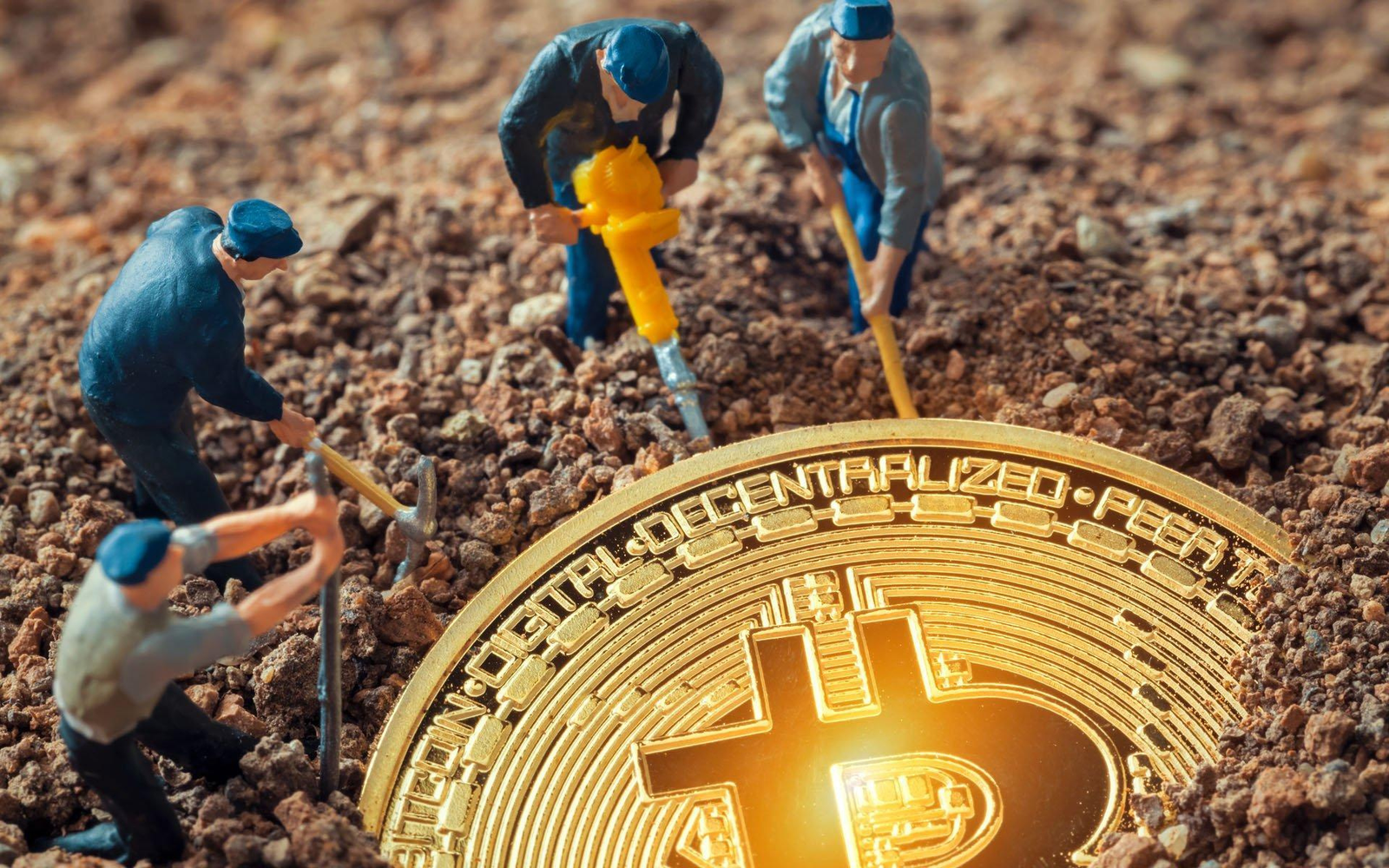Finding the best bitcoin mining rig in 2025 has become more critical than ever as Bitcoin’s network difficulty continues to rise and mining competition intensifies. With cryptocurrency prices experiencing significant volatility, selecting the proper mining hardware can make the difference between profitable operations and costly investments. Whether you’re a seasoned miner looking to upgrade your setup or a newcomer exploring bitcoin mining opportunities, this comprehensive guide will help you navigate the complex world of mining rigs and identify the most profitable options available in 2025.
The landscape of bitcoin mining has evolved dramatically, with new ASIC miners offering unprecedented hash rates and energy efficiency. Understanding which mining rig delivers the best return on investment requires careful analysis of factors including initial cost, power consumption, hash rate performance, and current market conditions.
What Makes the Best Bitcoin Mining Rig in 2025?
Hash Rate Performance and Efficiency
The best bitcoin mining rig 2025 must deliver exceptional hash rate performance while maintaining optimal energy efficiency. Hash rate, measured in terahashes per second (TH/s), determines how many calculations your mining rig can perform, directly impacting your mining rewards. Modern ASIC miners now achieve hash rates exceeding 100 TH/s, representing a significant leap from previous generations.
Energy efficiency, measured in watts per terahash (W/TH), has become equally crucial as electricity costs often represent 60-70% of mining operational expenses. The most efficient miners in 2025 achieve ratios below 30 W/TH, dramatically reducing operational costs and improving profitability margins.
Build Quality and Reliability
Mining rigs operate 24/7 under intensive conditions, making reliability crucial for long-term profitability. Premium manufacturers invest heavily in cooling systems, component quality, and firmware optimisation to ensure consistent performance. Look for mining rigs with robust cooling solutions, high-quality fans, and proven track records for minimal downtime.
Warranty coverage and manufacturer support also significantly impact the total cost of ownership. Reputable manufacturers typically offer 6-12 month warranties and responsive technical support, protecting your investment against hardware failures.
Profitability and ROI Calculations
Profitability analysis involves multiple variables, including Bitcoin price, network difficulty, electricity costs, and initial hardware investment. The best bitcoin mining rig 2025 should offer reasonable payback periods under current market conditions, typically ranging from 8-18 months, depending on electricity rates and Bitcoin pricing.
Consider using mining profitability calculators that account for network difficulty adjustments and electricity costs in your region. These tools help identify which mining rigs offer the best potential returns based on your specific circumstances.
Top 7 Best Bitcoin Mining Rigs for 2025

Antminer S21 XP – Premium Performance Leader
The Antminer S21 XP represents Bitmain’s flagship offering for 2025, delivering an impressive 270 TH/s hash rate with 15.0 J/TH energy efficiency. This mining rig excels in large-scale operations where maximum hash rate density is essential.
Key Specifications:
- Hash Rate: 270 TH/s
- Power Consumption: 4,050W
- Efficiency: 15.0 J/TH
- Approximate Price: $8,500-$9,500
The S21 XP features advanced cooling technology and an optimised chip architecture, making it suitable for industrial mining farms and serious individual miners. While the initial investment is substantial, the superior hash rate and efficiency often justify the premium price for high-volume operations.
Whatsminer M60S – Balanced Performance Option
MicroBT’s Whatsminer M60S offers an excellent balance between performance and cost-effectiveness, delivering 170 TH/s with competitive energy efficiency. This model has gained popularity among medium-scale miners seeking reliable performance without premium pricing.
Key Specifications:
- Hash Rate: 170 TH/s
- Power Consumption: 3,400W
- Efficiency: 20.0 J/TH
- Approximate Price: $5,500-$6,500
The M60S features robust construction and proven reliability, making it an attractive option for miners prioritising stability and reasonable payback periods. Its moderate power consumption also makes it suitable for facilities with limited electrical capacity.
Antminer S21 Pro – Efficiency Champion
For miners prioritising energy efficiency, the Antminer S21 Pro delivers exceptional performance per watt consumed. With 234 TH/s and 15.0 J/TH efficiency, this mining rig excels in regions with higher electricity costs.
Key Specifications:
- Hash Rate: 234 TH/s
- Power Consumption: 3,510W
- Efficiency: 15.0 J/TH
- Approximate Price: $7,000-$8,000
The S21 Pro’s advanced cooling system and optimised firmware ensure consistent performance while minimising operational noise levels. This makes it suitable for smaller facilities where noise considerations are essential.
Canaan AvalonMiner 1466 – Budget-Friendly Choice
Canaan’s AvalonMiner 1466 provides an accessible entry point for newcomers to bitcoin mining, offering solid performance at competitive pricing. While not matching premium models’ hash rates, it delivers reasonable profitability for cost-conscious miners.
Key Specifications:
- Hash Rate: 150 TH/s
- Power Consumption: 3,420W
- Efficiency: 22.8 J/TH
- Approximate Price: $4,500-$5,500
The 1466 model features reliable construction and straightforward setup procedures, making it ideal for miners transitioning from GPU mining or those starting their first ASIC mining operation.
Whatsminer M50S++ – Proven Reliability
The Whatsminer M50S++ continues MicroBT’s tradition of reliable mining hardware, offering 126 TH/s with proven stability. While not the highest hash rate available, it’s consistent performance and competitive pricing make it popular among established miners.
Key Specifications:
- Hash Rate: 126 TH/s
- Power Consumption: 3,472W
- Efficiency: 27.5 J/TH
- Approximate Price: $3,500-$4,500
This model’s extensive deployment history provides confidence in long-term reliability, with many units operating continuously for multiple years without significant issues.
Antminer S19k Pro – High-Volume Option
The Antminer S19k Pro targets high-volume mining operations requiring maximum hash rate density. With 120 TH/s and mature technology, it offers predictable performance for large-scale deployments.
Key Specifications:
- Hash Rate: 120 TH/s
- Power Consumption: 2,760W
- Efficiency: 23.0 J/TH
- Approximate Price: $3,000-$4,000
Its established market presence and available aftermarket support make it attractive for miners seeking proven technology with extensive service networks.
Goldshell KD-BOX Pro – Alternative Approach
While primarily designed for Kadena mining, the KD-BOX Pro represents innovative approaches to cryptocurrency mining hardware, offering a compact design and lower power consumption for specialised applications.
Key Specifications:
- Hash Rate: 2.6 TH/s (Kadena)
- Power Consumption: 230W
- Efficiency: Varies by algorithm
- Approximate Price: $800-$1,200
This compact miner appeals to hobbyists and those exploring alternative cryptocurrency mining opportunities beyond Bitcoin.
Bitcoin Mining Rig Setup and Optimisation
Essential Infrastructure Requirements
Setting up the best bitcoin mining rig 2025 requires adequate electrical infrastructure, cooling systems, and network connectivity. Most modern ASIC miners require 220V electrical connections and dedicated circuits to handle their substantial power demands safely.
Proper ventilation and cooling are critical for maintaining optimal performance and extending hardware lifespan. Industrial fans, air conditioning systems, or specialised cooling solutions may be necessary depending on your local climate and facility setup.
Network connectivity should provide stable internet access with minimal latency to ensure consistent pool connections and maximise mining efficiency. Wired Ethernet connections typically offer superior reliability compared to wireless alternatives.
Mining Pool Selection and Configuration
Choosing the right mining pool significantly impacts your mining profitability and payout frequency. Popular pools like F2Pool, Antpool, and Slush Pool offer different fee structures, payout methods, and geographic server locations.
Consider factors including pool fees (typically 1-3%), payout thresholds, and server locations when selecting a mining pool. Pools with servers closer to your geographic location often provide lower latency and improved mining efficiency.
Configure your mining rig with backup pool addresses to ensure continuous operation if your primary pool experiences downtime or connectivity issues.
Monitoring and Maintenance Best Practices
Regular monitoring and maintenance ensure optimal performance from your mining hardware. Implement monitoring systems that track hash rates, temperatures, power consumption, and error rates to identify potential issues before they impact profitability.
Establish maintenance schedules for cleaning dust accumulation, checking fan operation, and updating firmware when manufacturers release improvements. Proactive maintenance significantly extends hardware lifespan and maintains peak performance levels.
Document your mining rig configurations, pool settings, and performance baselines to facilitate troubleshooting and optimisation efforts over time.
Profitability Analysis and ROI Calculations
Current Market Conditions and Projections
Bitcoin mining profitability depends heavily on Bitcoin price movements, network difficulty adjustments, and electricity costs. As of 2025, network difficulty continues increasing as more miners join the network, requiring more powerful hardware to maintain profitability.
Bitcoin price volatility creates both opportunities and risks for mining operations. Higher Bitcoin prices improve mining profitability but also attract additional competition, leading to difficulty increases that reduce individual miner returns.
Consider long-term Bitcoin price projections and network growth trends when evaluating potential returns from mining rig investments. Conservative estimates often provide more realistic profitability assessments than optimistic projections.
Electricity Cost Optimisation Strategies
Electricity costs represent the most significant operational expense for bitcoin mining operations, making cost optimisation crucial for profitability. Industrial electricity rates, renewable energy sources, and time-of-use pricing can significantly impact operational costs.
Explore opportunities for negotiating industrial electricity rates if your mining operation consumes substantial power. Many utilities offer special rates for cryptocurrency mining operations that operate during off-peak hours.
Consider renewable energy sources like solar or wind power to reduce long-term electricity costs and improve sustainability. While initial installation costs are substantial, renewable energy can provide long-term cost advantages and energy independence.
Tax Implications and Regulatory Considerations
Bitcoin mining operations face complex tax implications that vary by jurisdiction. Mining rewards are typically treated as income at fair market value when received, while hardware depreciation may provide tax benefits over time.
Consult tax professionals familiar with cryptocurrency mining to ensure compliance with local tax regulations and optimise your tax position. Proper record-keeping for mining rewards, expenses, and hardware investments is essential for accurate tax reporting.
Stay informed about evolving cryptocurrency regulations in your jurisdiction, as changes in legal status or taxation could significantly impact mining profitability and operational requirements.
Future Trends in Bitcoin Mining Hardware
Technological Advancements and Innovations
The bitcoin mining industry continues advancing with improvements in chip technology, cooling systems, and energy efficiency. Next-generation ASIC chips promise even higher hash rates and lower power consumption, potentially disrupting current hardware economics.
Immersion cooling technologies are gaining adoption in large-scale mining operations, offering superior heat dissipation and enabling higher power densities. These innovations may influence future mining rig designs and operational requirements.
Artificial intelligence and machine learning applications are being explored for mining optimisation, predictive maintenance, and automated pool switching to maximise profitability based on market conditions.
Environmental Sustainability Initiatives
Environmental concerns surrounding bitcoin mining are driving innovations in sustainable mining practices. Renewable energy integration, waste heat recovery, and carbon-neutral mining operations are becoming increasingly important for industry acceptance.
Mining rig manufacturers are prioritising energy efficiency improvements to address environmental concerns and reduce operational costs. Future mining hardware will likely achieve even better efficiency ratios while maintaining competitive hash rates.
Regulatory pressure for sustainable mining practices may influence hardware design priorities and operational requirements, potentially favouring more efficient mining rigs over pure performance-focused designs.
Where to Buy the Best Bitcoin Mining Rig 2025

Authorised Dealers and Direct Manufacturers
Purchasing mining rigs from authorised dealers or directly from manufacturers provides warranty coverage and authentic hardware. Major manufacturers like Bitmain, MicroBT, and Canaan maintain authorised dealer networks for legitimate equipment distribution.
Direct manufacturer purchases often offer the best pricing and warranty terms, but may require larger minimum orders or longer delivery times. Authorisedd dealers provide local support and faster delivery options, but typically charge premium prices.
Verify dealer authenticity and warranty coverage before making substantial hardware investments. Fraudulent sellers frequently target cryptocurrency miners with counterfeit or refurbished equipment marketed as new.
Secondary Market Considerations
The secondary market offers opportunities to acquire mining hardware at reduced prices, particularly when newer models create surplus inventory of older equipment. However, used mining rigs carry risks including reduced remaining lifespan, limited warranty coverage, and unknown operational history.
Thoroughly inspect used mining hardware before purchase, checking for physical damage, excessive wear, and performance verification. Request operational history and maintenance records when available to assess remaining useful life.
Consider the total cost of ownership when evaluating used mining rigs, including potential repair costs, reduced efficiency, and shorter operational lifespan compared to new equipment.
Conclusion
Selecting the best bitcoin mining rig in 2025 requires careful consideration of hash rate performance, energy efficiency, initial investment, and your specific operational requirements. The mining rigs highlighted in this guide represent the top options available, each offering unique advantages for different mining scenarios.
The Antminer S21 XP leads in raw performance for large-scale operations, while options like the Whatsminer M60S provide excellent value for medium-scale miners. Remember that profitability depends heavily on electricity costs, Bitcoin price movements, and network difficulty changes.
Before investing in mining hardware, thoroughly analyse your electricity rates, cooling requirements, and expected ROI based on conservative market projections. The cryptocurrency mining landscape evolves rapidly, making ongoing research and adaptation essential for long-term success.

















